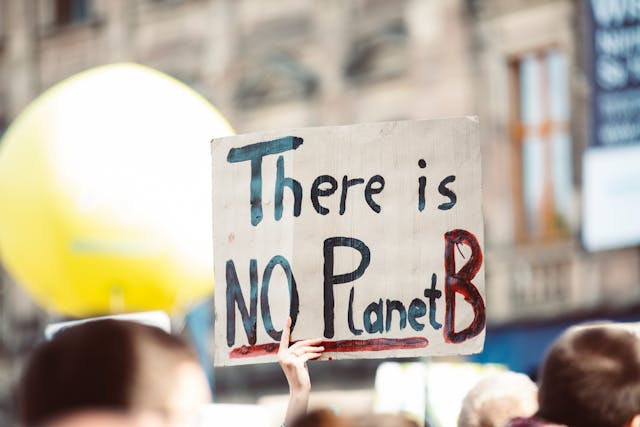In recent years, there has been a rapid increase in the frequency and intensity of extreme weather events. From the record-breaking heat across Asia to the recent floods in UAE, these are no longer isolated events but part of a larger phenomenon – climate change. What is climate change? How are climate change and extreme weather events around the world related? And what can we do to help?
Simply put, climate change is significant and long-term alterations of temperatures, rainfall and other atmospheric conditions of the earth. Hotter temperatures, shrinking glaciers, rising sea levels, and loss of species are some of the visible effects of climate change. An argument you may have heard from people who don’t believe in climate change is that it is a natural process. Is it true? To an extent, yes. It’s natural for the earth’s climate to fluctuate over tens of thousands of years, but the rapidity and intensity of climate change we are experiencing now is mostly due to human activity.
At the root of climate change is a phenomenon known as the greenhouse effect. It is a natural and vital process that warms the earth’s surface and makes it habitable. Certain gasses such as carbon dioxide and methane, known as greenhouse gases, help trap the heat in the earth’s atmosphere. However, human activities have intensified this effect leading to global warming and climate change.
Since the Industrial Revolution, the concentration of almost all key greenhouse gases has increased.
- There has been a 48% increase in the concentration of carbon dioxide since the pre-industrial period and almost all of this increase is due to human activities.
- The concentration of methane has doubled since the pre-industrial period.
- The concentration of halogenated gases which was almost non-existent till a few decades ago has been rapidly increasing.
What are the main causes?
The use of fossil fuels is the largest contributor to global climate change, responsible for over 75% of global greenhouse gas emissions and nearly 90% of all carbon dioxide emissions. Deforestation and other land use changes are responsible for approximately 15% of global greenhouse gas emissions, making them another significant contributor to climate change. Other contributors include increased power consumption, unsustainable production of food and others.
The result?
Climate change leads to extreme weather events by raising global temperatures. This intensifies heat waves, changes weather patterns, and increases moisture in the atmosphere. As a result, we see melting glaciers, rising sea levels and more frequent and severe storms, hurricanes, heavy rainfall, and flooding. Changes in precipitation patterns also lead to more droughts and wildfires.
- According to various reports, the last decade was the warmest decade on record for both land and ocean, with 2023 being the warmest year.
- Heatwaves and heavy rainfall have become more intense and frequent. Since the beginning of 2024, record-breaking temperatures have been registered in various parts of India, UAE and Brazil experienced unprecedented rainfall leading to floods, and many more such events have happened.
- Glaciers around the world are thinning. Recently, Venezuela became the first country in the world to lose all its glaciers due to extreme heat.
What has been done so far?
On a global level, the Paris Agreement was signed by almost 200 countries in 2015 to limit the global temperature rise below 2 degrees Celsius and to reach net zero emissions by 2050. Though most countries are working towards this target, greenhouse gas emissions are still rising and the global temperature rise is nearing the 2 degrees Celsius limit.
What can we do?
As individuals, we can help mitigate climate change by taking a few steps such as:
- Limiting fossil fuel use
- Reducing air travel
- Reducing energy consumption
- Adopting renewable energy
- Conserving water
- Eating a sustainable diet
- Supporting sustainable businesses
- Raising awareness





























